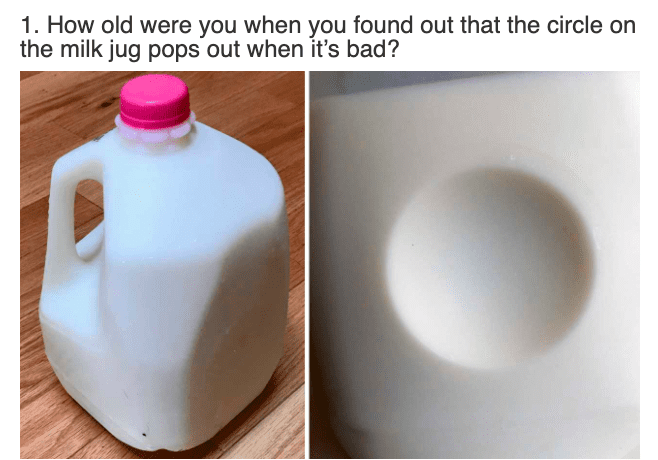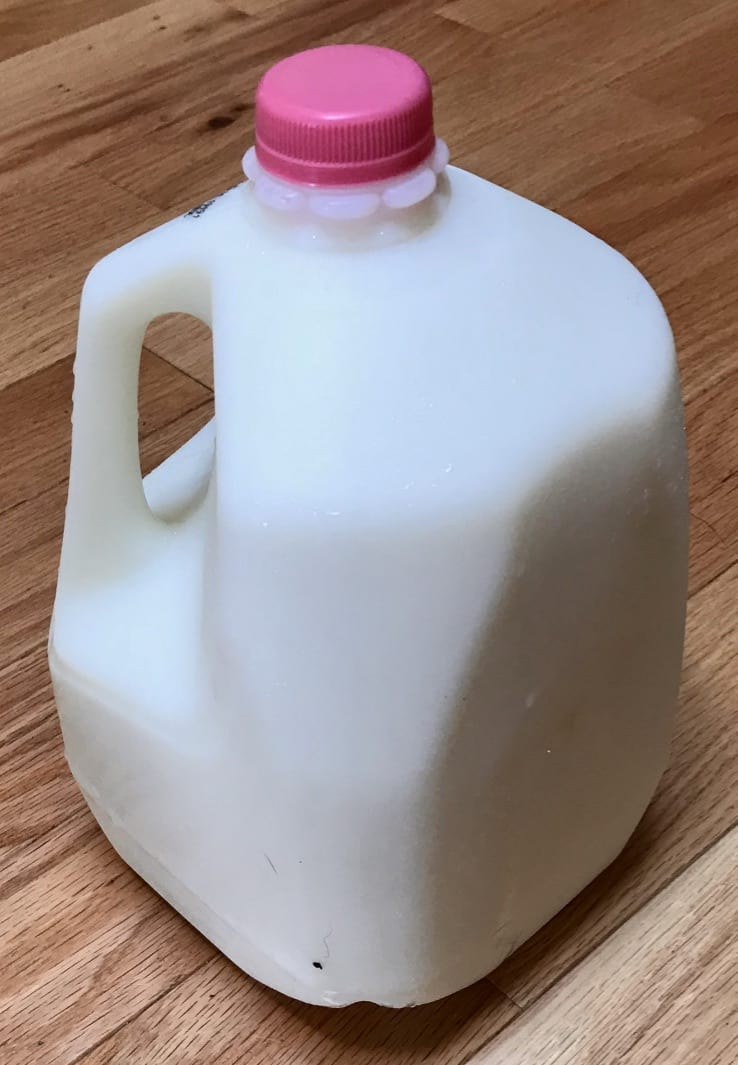Trending Now
I saw something circling recently, one of those “today years old” things, that claimed the inverted circles on the sides of milk jugs would pop out when your milk went bad.
Now, I’m not outright calling that person a liar, but I am saying that, as someone who frequently forgets to dump out old milk, I’ve personally only seen it happen lonnnnnnnnng after a sell-by date.
More like the milk inside has become cottage cheese.
Here’s the meme…

Image Credit: Mind-Blowing Facts
So if that’s not the reason… why are they there, though? Or…. is the meme right?
Not exactly, though there may a kernel of truth to it.
According to Distractify, the concave circles are there primarily to provide structural integrity. A full gallon of liquid in a jug that had only flat, rigid sides made of thin plastic would probably be fine for as long as it sat on your shelf, but if you (or your adorable child) dropped it on the floor, it would most likely explode.
That simple little dimple provides enough give to save your floors, and your milk, in the likely event a toddler has an oopsie involving your jug. The circle would warp outward, giving the milk somewhere to go when it sloshes around on impact – by making it more flexible, they’re also making it more durable.

Image Credit: Wikipedia
In the same vein, as milk gets older and microbes become more active, therefore expelling more gas, the dimples also give that excess somewhere to go.
If they weren’t there, a buildup of microbe farts could also explode your jug (in theory).
Basically, the circular indent is there to give your milk somewhere to go, in the event that it becomes too much for the container, for whatever reason, in its current shape.

Image Credit: Wikimedia
So yeah, if your milk was really spoiled, and there was tons of microbe breeding and subsequent gas, you might see them pop out to accommodate it.
I really hope that you’d notice your milk had gone bad before then, though.
Unless you’re making cottage cheese on purpose.
In which case, carry on.






